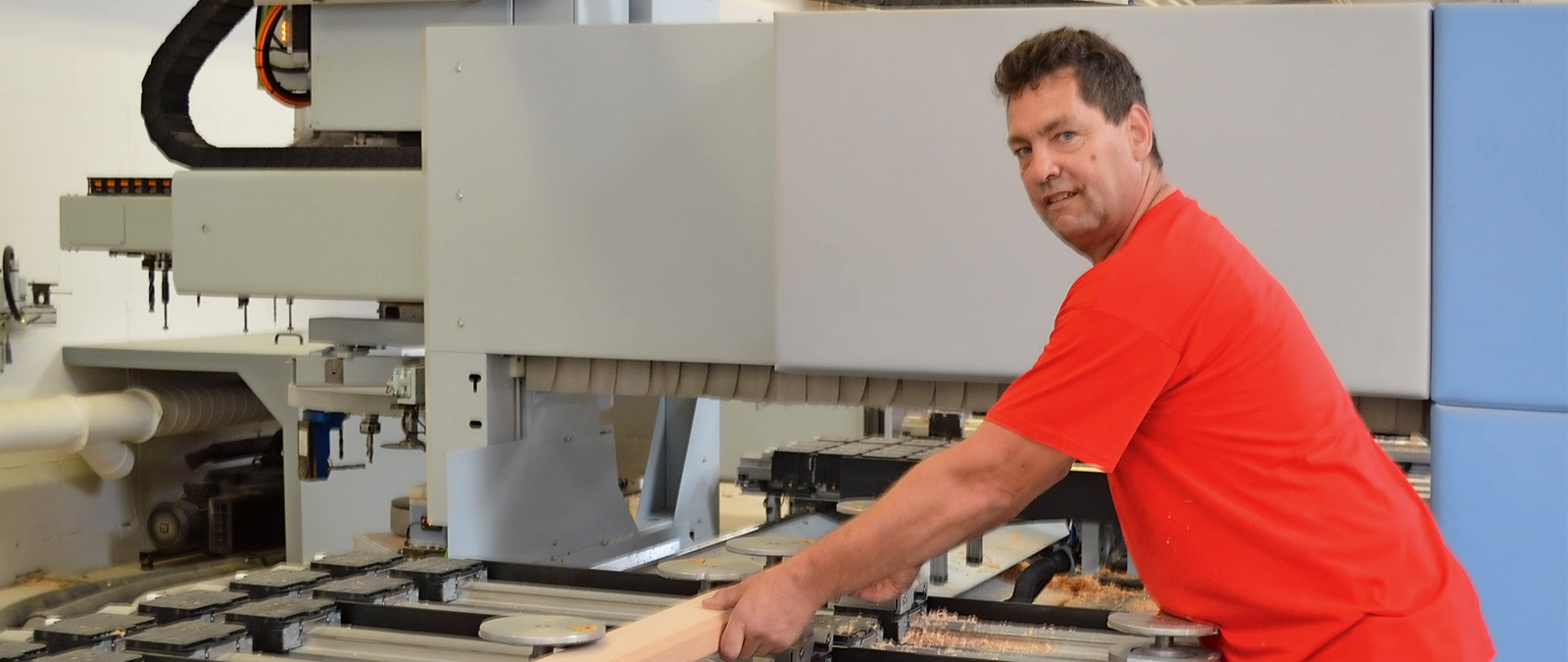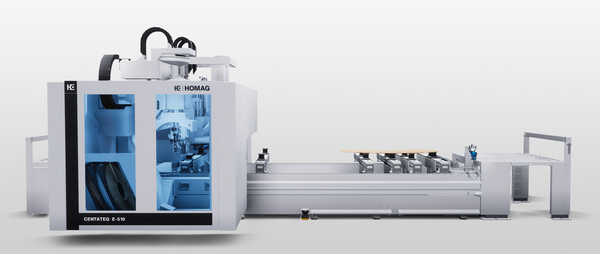
An article from the specialist magazine DDS, 08/ 2015. Here you can read the article on DDS-Online.
On the touchscreen of his year-old BMG 512 profiLine from HOMAG, Günter Härrer selects the program for the next handrail. As usual, there are five staircases scheduled in two shifts today.
WeberHaus employs over 1 000 people at two locations and produces around 800 houses with 1 000 staircases every year—and the machines it uses include machines from the HOMAG subsidiary WEINMANN. Rather than producing one staircase after another, Günter Härrer first produces the stringers, then the handrails, the posts, and finally the steps themselves. This saves him some setup time because the clamping elements have to be changed or offset between each of these process steps. The suction units are still mounted on the cross rails following trimming of the last stringer. All cross rails move outwards to the right or left. The assembly platforms fitted with suction units move forwards, allowing Günter to remove the suction units easily. He confirms this process step and all assembly platforms to be fitted with the powerClamp clamping elements for the handrails move forwards so that they are within his reach. There are always two elements for each cross rail. This allows the machine to reclamp the handrail once it has trimmed and profiled one side, so that it can then process the opposite side. Before the unprocessed handrail is deposited, the clamping elements move into position. A laser projector helps with positioning. The handrails are followed by the post program, for which there are separate vice-like clamps. The posts have to be processed on multiple sides, meaning they have to be continually turned 90°. Günter trims the stringers on the normal suction units.
Finally, Günter processes the steps and to do so, sets the machine up for shuttle operation. While the machine processes one pair of steps on one side, he removes a freshly trimmed pair and inserts an unprocessed part for the next pair of steps. The moving gantry protrudes toward the front and is fitted with safety bumpers to protect employees. The machine uses a sawing unit to cut diagonally through the rectangular unprocessed part. It moves the two halves apart so that the four- or five-piece spindles can trim and profile the steps from all sides. The sensoFlex scanning system scans the workpiece with a ring that surrounds the tool and reports any deviations in dimensions to the control system, which then corrects the trimming path electronically.
The previous machine had become rather old and had no saw or sensor. It had a shank miller for separating the steps, but the travel mechanism was too imprecise for further processing. Other machines had to complete edge processing of the steps, as well as profiling tasks. Klaus Armbruster, manager of staircase production with 17 employees, is pleased that profiling and edge processing can now take place on the CNC with the other process steps, and not on separate machines.
Images: specialist magazine dds/ Georg Molinski
Weberhaus GmbH & Co. KG
WeberHaus employs 1000 people at two locations and produces 800 houses with 1000 staircases every year—and the machines it uses include machines from the HOMAG subsidiary WEINMANN.
www.weberhaus.de
